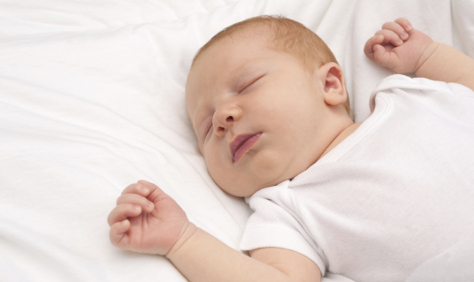Understanding Sudden infant death syndrome (SIDS)
We help you understand what you need to know about Sudden infant death syndrome (SIDS)

Sudden infant death syndrome (SIDS) - sometimes known as ‘cot death’ is the extremely rare event of sudden, unexpected and unexplained death of an otherwise healthy baby.
Firstly, it is worth bearing in mind that only around 200 babies a year in the UK die from SIDS. Although this figure may sound high, in fact this is a small fraction of all babies and the probability of your baby dying from it is very low.
Most of these instances occur in the first 6 months of the baby's life. SIDS poses a greater risk to infants born with low birthweight or prematurely. Sudden infant death syndrome is also slightly more common in baby boys.
The majority of cases of SIDS takes place when the baby is sleeping, however it can also very occasionally happen when the baby is awake too.
Due to the nature of SIDS, it is very hard to identify specific causes of the syndrome. However there are a few things that should be avoided, which have shown to have a correlation. Experts believe that SIDS occurs at a particular point in a baby’s development, and that it affects babies who are more vulnerable to environmental stresses.
These environmental factors include: getting tangled in bedding or clothing, tobacco smoke, a breathing obstruction or a minor illness. It has also been proved that there is an association between sleeping with your baby (co sleeping) and SIDS.
Infants that suffer from SIDS are thought to most likely have problems with the way they respond to these environmental factors and how they regulate their heart rate, body temperature and breathing.
Although the exact causes of this syndrome are not fully understood, there are a number of actions you can take to help minimise this risk, as well as a number of actions to avoid.
Actions to take:
Always place your baby on their back to sleep
Place your baby in a position so their feet are touching the bottom of the bed/Moses basket/pram
Always ensure your baby’s head is uncovered and no loose bedding or toys in the cot, blankets should be tucked no higher than shoulder height
It is encouraged to let your baby sleep in a cot or Moses basket, in the same room as you for the first 6 months
Opt for a mattress that is firm, completely flat and waterproof. Also be sure that the mattress is in good condition
If you can, it is advised for the mother to breastfeed your baby
Actions to avoid:
Your baby being in the same room as someone who is smoking
Never smoke while pregnant
It is advised not to fall asleep with your baby (on a bed, sofa or armchair)
Avoid contact (particularly sleeping in the same proximity) of people who have been smoking, drinking or taking drugs
Monitor your baby’s temperature to ensure they do not get too hot or too cold. The ideal situation is a room temperature between 16-20C, with light bedding or a lightweight baby specific sleeping bag. It is important the sleeping environment is comfortable and safe at all times.
It is common for babies to pick up minor illnesses, which are not to be of concern. Ensure your baby is well hydrated, and don’t let them get too hot. However if you are worried about your baby at any point, then see your GP, or call NHS 111 for advice. Only dial 999 if you baby stops breathing or turns blue, is having issues breathing, is unconscious and unaware of it’s surroundings, will not wake up or has suffered from a fit.